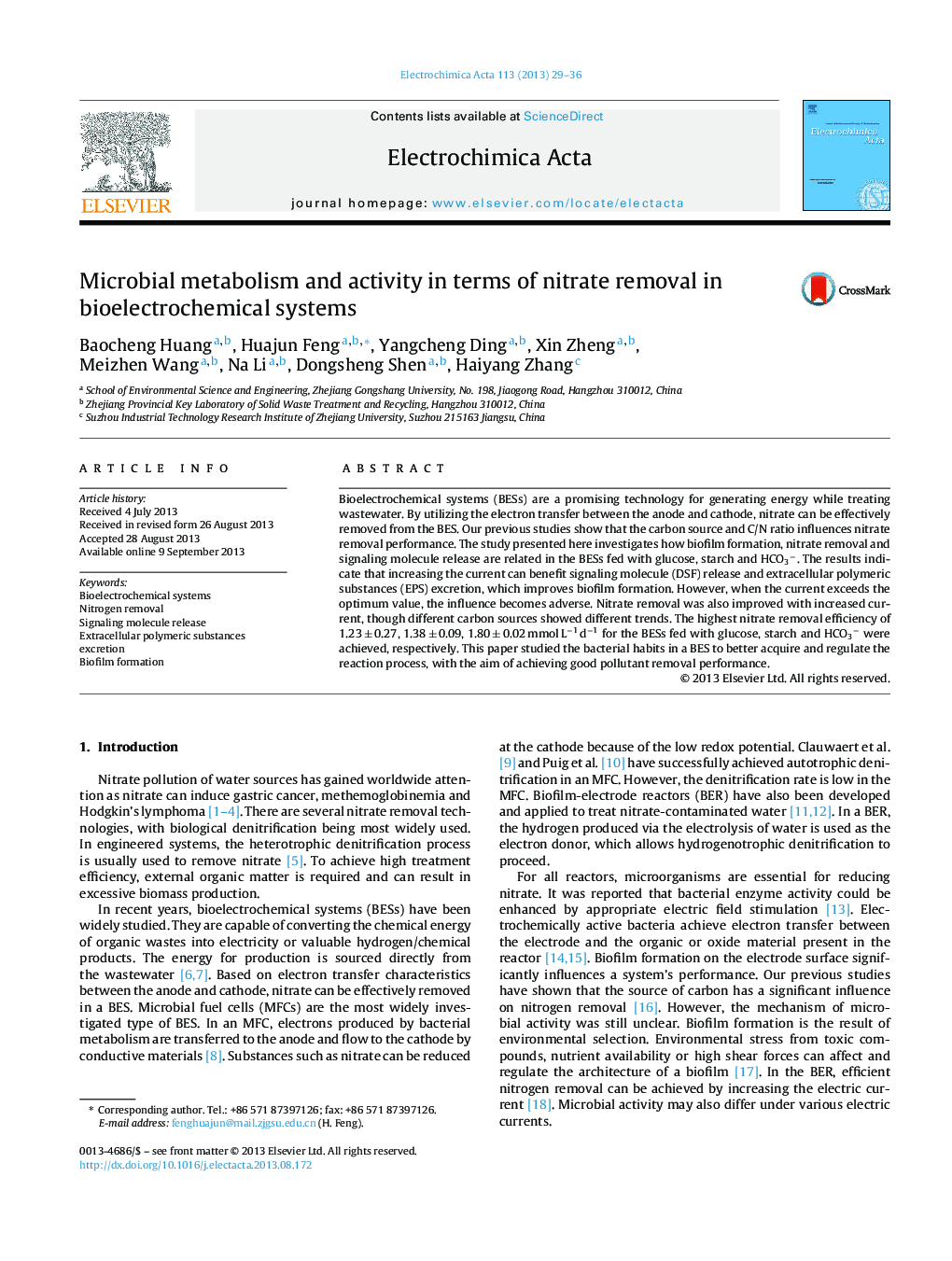| Article ID | Journal | Published Year | Pages | File Type |
|---|---|---|---|---|
| 6614489 | Electrochimica Acta | 2013 | 8 Pages |
Abstract
Bioelectrochemical systems (BESs) are a promising technology for generating energy while treating wastewater. By utilizing the electron transfer between the anode and cathode, nitrate can be effectively removed from the BES. Our previous studies show that the carbon source and C/N ratio influences nitrate removal performance. The study presented here investigates how biofilm formation, nitrate removal and signaling molecule release are related in the BESs fed with glucose, starch and HCO3â. The results indicate that increasing the current can benefit signaling molecule (DSF) release and extracellular polymeric substances (EPS) excretion, which improves biofilm formation. However, when the current exceeds the optimum value, the influence becomes adverse. Nitrate removal was also improved with increased current, though different carbon sources showed different trends. The highest nitrate removal efficiency of 1.23 ± 0.27, 1.38 ± 0.09, 1.80 ± 0.02 mmol Lâ1 dâ1 for the BESs fed with glucose, starch and HCO3â were achieved, respectively. This paper studied the bacterial habits in a BES to better acquire and regulate the reaction process, with the aim of achieving good pollutant removal performance.
Related Topics
Physical Sciences and Engineering
Chemical Engineering
Chemical Engineering (General)
Authors
Baocheng Huang, Huajun Feng, Yangcheng Ding, Xin Zheng, Meizhen Wang, Na Li, Dongsheng Shen, Haiyang Zhang,
